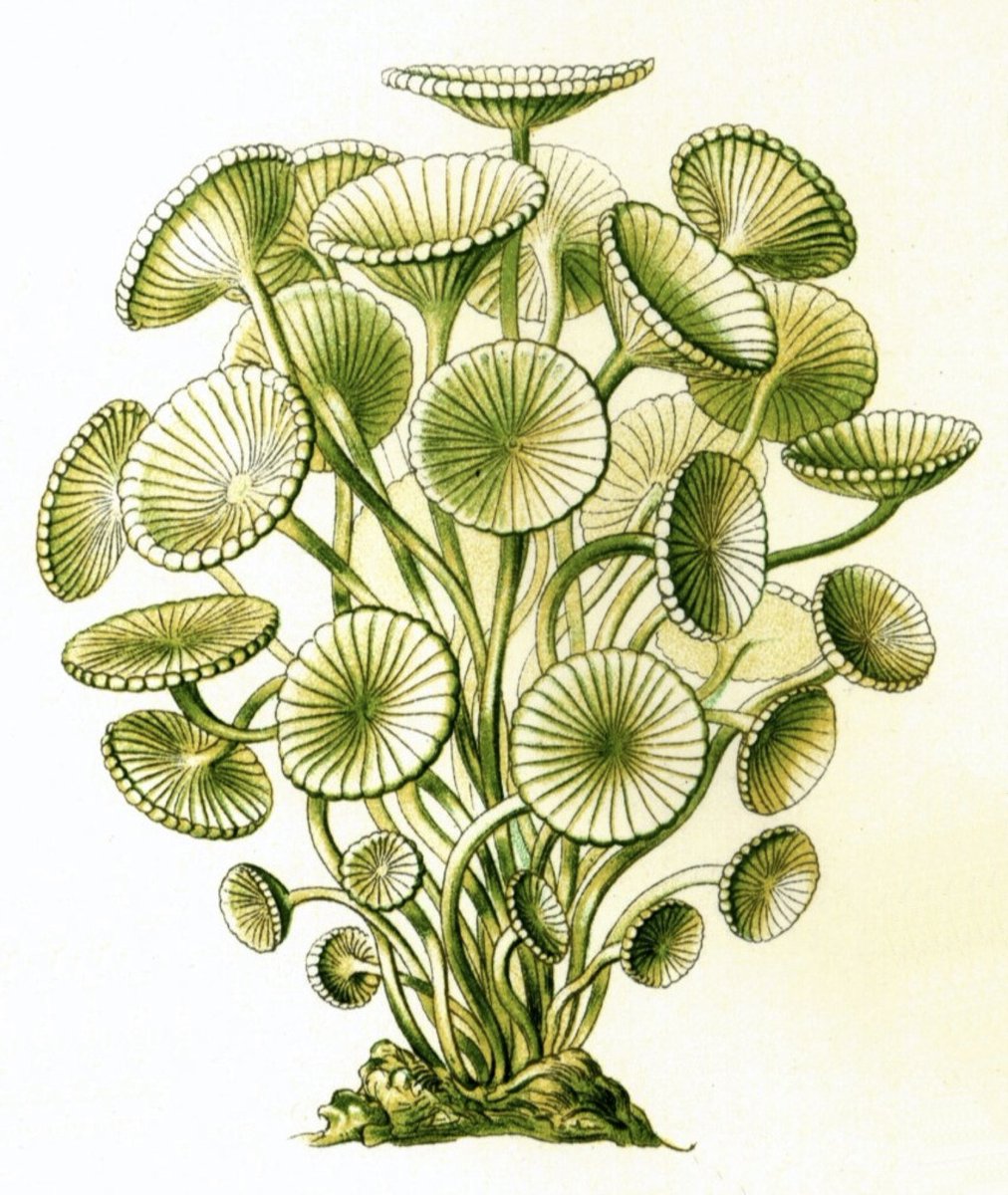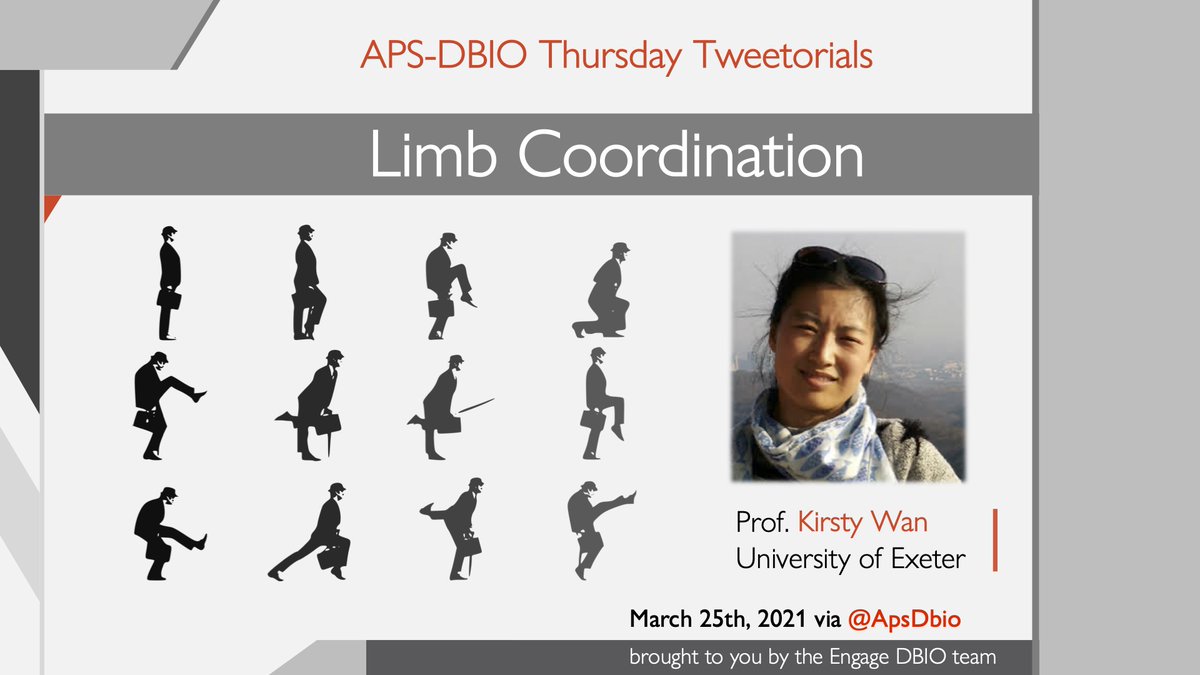
Promoting the study of the physical principles and mechanisms behind how living organisms survive, adapt, and grow. Join now: https://t.co/zcVxOs6vR0
How to get URL link on X (Twitter) App


 Feet and fins are quite different in their anatomy. But both have to be stiff enough to withstand the forces of propulsion. Are there deeper connections between them?
Feet and fins are quite different in their anatomy. But both have to be stiff enough to withstand the forces of propulsion. Are there deeper connections between them?
 Biological systems are complicated. If we try to make “realistic” models we are led into a forest of parameters. If we are going to have a theoretical physicist’s understanding of life, we have to find principles that cut through this complexity.
Biological systems are complicated. If we try to make “realistic” models we are led into a forest of parameters. If we are going to have a theoretical physicist’s understanding of life, we have to find principles that cut through this complexity.

 As Kevin Young eloquently put it, “To be brutally honest, few people care that bacteria have different shapes. Which is a shame, because the bacteria seem to care very much.” Check out how diverse bacterial shapes can be! tinyurl.com/6d93vce4 tinyurl.com/uvbtwvs3
As Kevin Young eloquently put it, “To be brutally honest, few people care that bacteria have different shapes. Which is a shame, because the bacteria seem to care very much.” Check out how diverse bacterial shapes can be! tinyurl.com/6d93vce4 tinyurl.com/uvbtwvs3 

 So what is sound? It’s a disturbance in a medium, generated by a moving object. In this cool gif, by @drussellpsu, you can you see a grey bar moving back and forth within a pipe. The air in the pipe is pushed around, and the disturbance within it (sound) travels through the air.
So what is sound? It’s a disturbance in a medium, generated by a moving object. In this cool gif, by @drussellpsu, you can you see a grey bar moving back and forth within a pipe. The air in the pipe is pushed around, and the disturbance within it (sound) travels through the air.

 In the womb, we are sterile (obgyn.onlinelibrary.wiley.com/doi/abs/10.111…). At birth, our mothers (and surrounding environment) act as our 'sour-dough starter culture,' inoculating us with hundreds-to-thousands of species. The exact composition of this 'microbiome' is as unique to us as our genome.
In the womb, we are sterile (obgyn.onlinelibrary.wiley.com/doi/abs/10.111…). At birth, our mothers (and surrounding environment) act as our 'sour-dough starter culture,' inoculating us with hundreds-to-thousands of species. The exact composition of this 'microbiome' is as unique to us as our genome. 


 Contrary to common perception, cheetahs and falcons are not the fastest animals. Mantis shrimps for example can use a saddle-shaped spring to hammer at ~100,000 m/s^2. This is so blazing fast, it cavitates surrounding fluid. nature.com/articles/42881…
Contrary to common perception, cheetahs and falcons are not the fastest animals. Mantis shrimps for example can use a saddle-shaped spring to hammer at ~100,000 m/s^2. This is so blazing fast, it cavitates surrounding fluid. nature.com/articles/42881…

 Cells can be really big. Many cells are small, but some are gigantic. Each little "plant" in this picture is a single algal cell, Acetabularia, more than 10 cm long. What determines the size of cells? bmcbiol.biomedcentral.com/articles/10.11…
Cells can be really big. Many cells are small, but some are gigantic. Each little "plant" in this picture is a single algal cell, Acetabularia, more than 10 cm long. What determines the size of cells? bmcbiol.biomedcentral.com/articles/10.11… 

 Large organisms cannot survive without a circulatory system. Diffusion is too slow to provide enough nutrients. For this reason, plants, animals and fungi have evolved complex irrigation systems.
Large organisms cannot survive without a circulatory system. Diffusion is too slow to provide enough nutrients. For this reason, plants, animals and fungi have evolved complex irrigation systems. 

 Gather up, friends. Did you see the internet-famous structure of the bacterial flagellar motor? Did it make you want to know more? Then buckle up, we are about to take a deep dive into nature’s most marvelous bio-nanomachine.
Gather up, friends. Did you see the internet-famous structure of the bacterial flagellar motor? Did it make you want to know more? Then buckle up, we are about to take a deep dive into nature’s most marvelous bio-nanomachine. 

 An organism’s genome encodes the rules for how it looks, grows, and responds to the environment in a series of “A”s, “C”s, “G”s and “T”s:
An organism’s genome encodes the rules for how it looks, grows, and responds to the environment in a series of “A”s, “C”s, “G”s and “T”s: 

 On a first glance, bacterial cell division may seem simple. In reality, it is the culmination of precisely orchestrated interplay between cytoplasmic and extracellular processes. #EngageDBIO #DBIOTweetorial
On a first glance, bacterial cell division may seem simple. In reality, it is the culmination of precisely orchestrated interplay between cytoplasmic and extracellular processes. #EngageDBIO #DBIOTweetorial
 Single molecule methods are allowing direct detection of subpopulations & dynamics, and correlation between multiple observables, with rapidly rising popularity. Technical milestones in single molecule fluorescence can be seen here.
Single molecule methods are allowing direct detection of subpopulations & dynamics, and correlation between multiple observables, with rapidly rising popularity. Technical milestones in single molecule fluorescence can be seen here. 

 For biophysicists, microscopy is a major tool and an exciting outlet for innovation. If you are a microscopy user more than a developer, it can seem like a major new method is published every week! Even just considering localization microscopy ...
For biophysicists, microscopy is a major tool and an exciting outlet for innovation. If you are a microscopy user more than a developer, it can seem like a major new method is published every week! Even just considering localization microscopy ... 

 Like a city, inside of the cell is organised by highways and roads (microtubules, actin), motors (dynein, kinesins, myosins) cargoes (e.g. receptors in endosomes, viruses) post-offices sorting cargoes (sorting endosomes), garbage clean-up (autophagosomes, lysosomes) and much more
Like a city, inside of the cell is organised by highways and roads (microtubules, actin), motors (dynein, kinesins, myosins) cargoes (e.g. receptors in endosomes, viruses) post-offices sorting cargoes (sorting endosomes), garbage clean-up (autophagosomes, lysosomes) and much more

 First up: “this feather star has too many arms and is too heavy to swim – instead it creeps along the seafloor”
First up: “this feather star has too many arms and is too heavy to swim – instead it creeps along the seafloor”